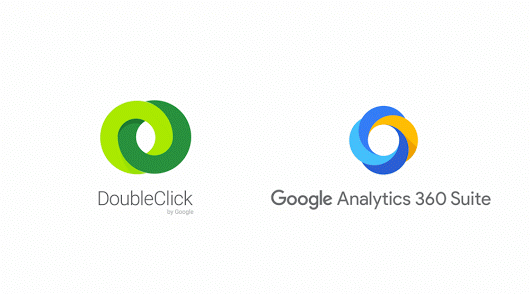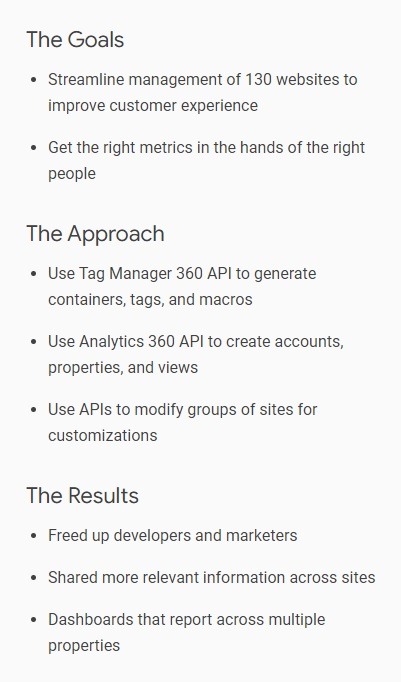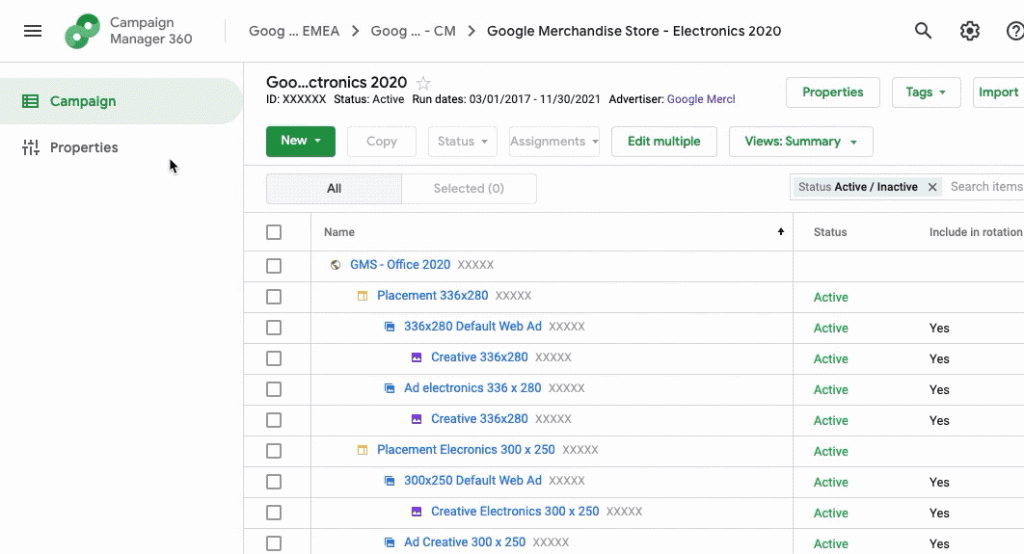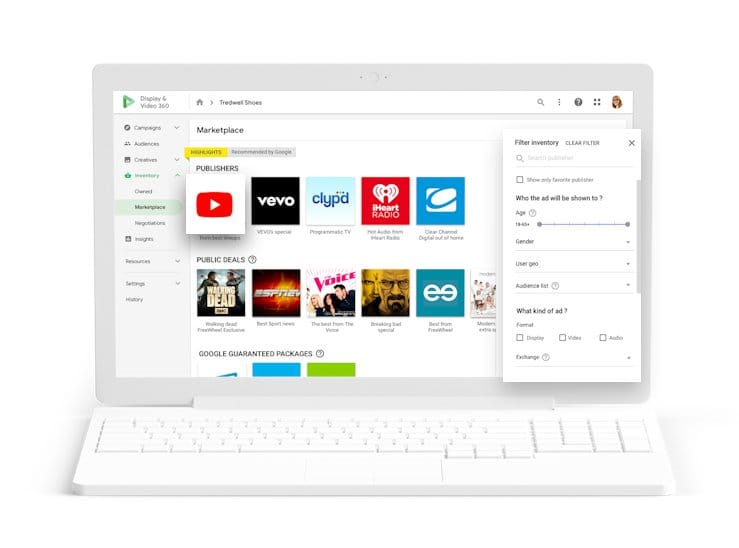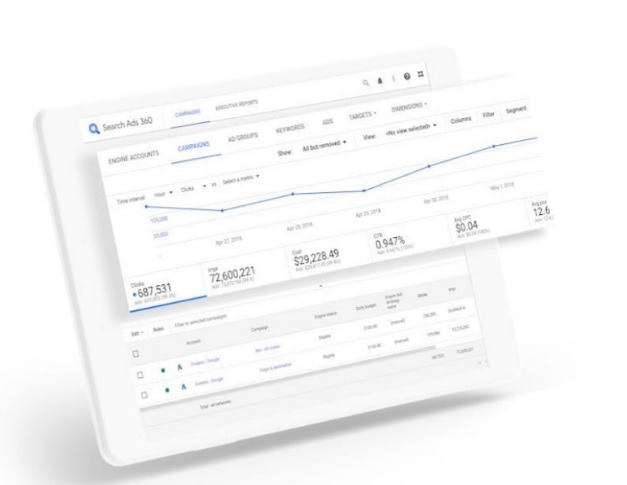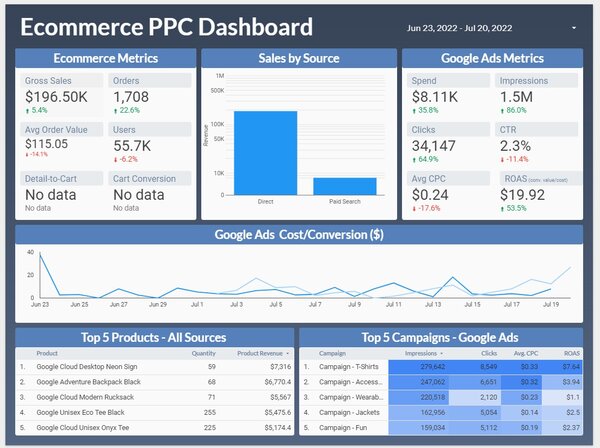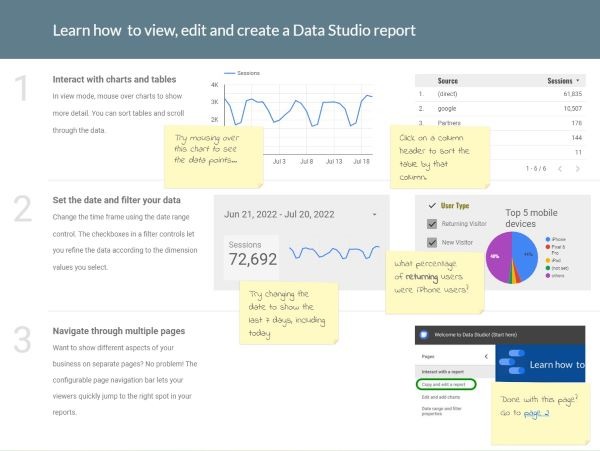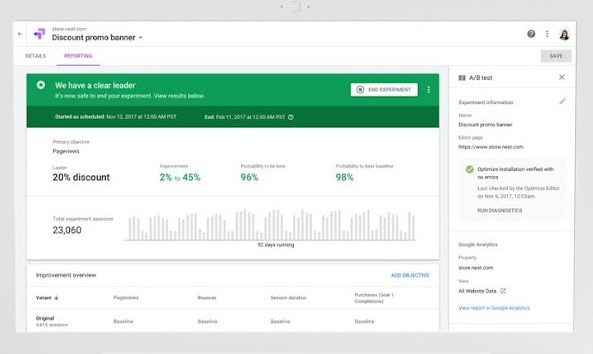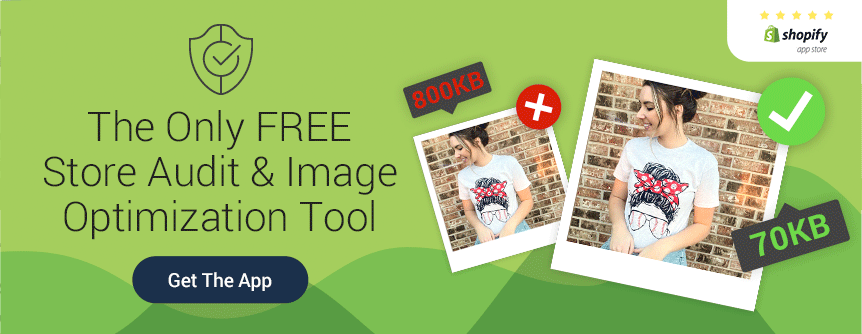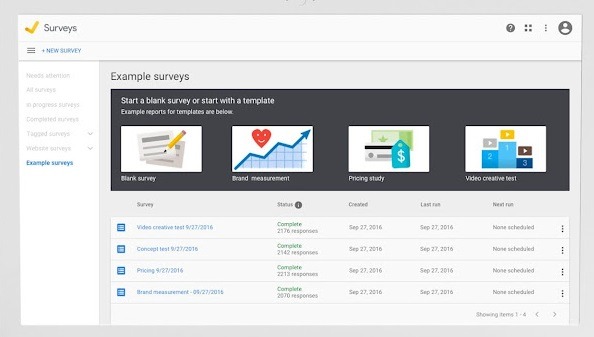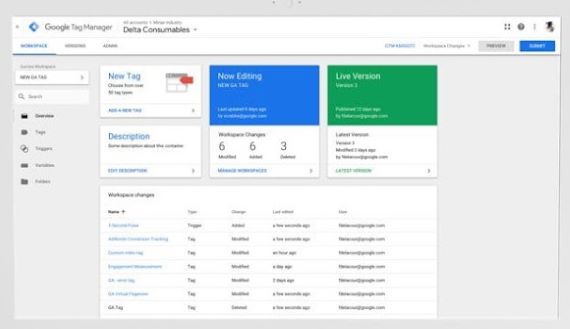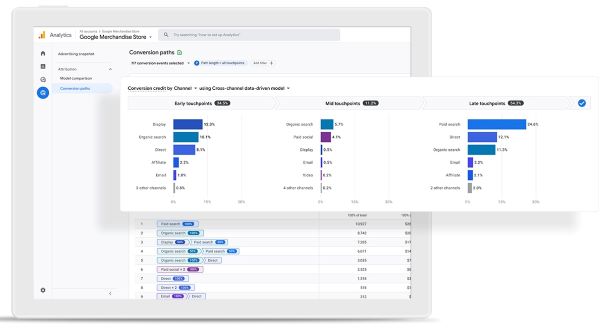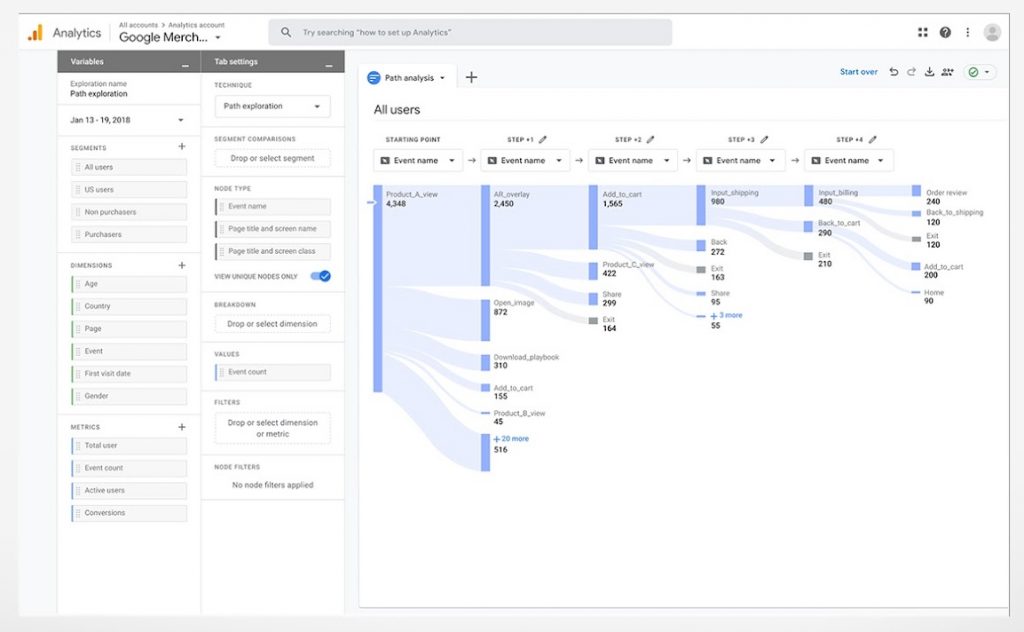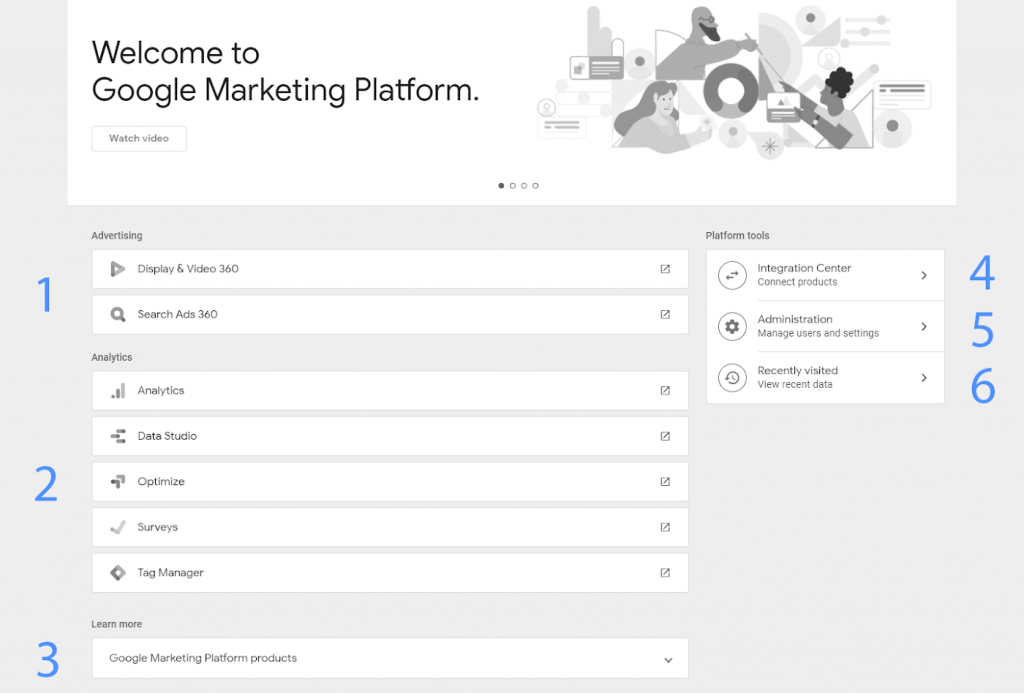What is Google Marketing Platform, how does it compare to Google Ads, and why should we care? We’ve got the answers to those questions, and more.
Whether you’re a smaller business looking for easy-to-use campaign tools or a large online retailer looking for advanced advertising and analytics solutions for PPC marketing, Google Marketing Platform offers a host of additional features that Google Ads does not include..
Ultimately, it is a more complex platform that has the potential for marketers to better adapt to changing and more complex consumer journeys. But is Google Marketing Platform right for your brand specifically? This post sets out to help you answer just that.
In this post, we answer your most important Google Marketing Platform questions, including:
- What is the Google Marketing Platform?
- What is Google Marketing Platform used for?
- What is the difference between Google Ads Manager and the Google Marketing Platform?
- What are the benefits of using the Google Marketing Platform?
- What does Google Marketing Platform include?
- How do online retailers get started with Google Marketing Platform?
Let’s get started.
What Is the Google Marketing Platform?
Google Marketing Platform is a next-generation web server-based software system, or demand-side platform (DSP). First launched in 2018, Google Marketing Platform was created by combining DoubleClick Digital Marketing and the Google Analytics 360 Suite for a more robust Google PPC management platform.
It has since evolved, offering more tools to make advertisers’ Google marketing faster and smarter. Think of it as an upgraded version of Google Ads that Google promises will provide advertisers with a more unified advertising and analytics platform for better campaign management.
In short, Google Marketing Platform offers PPC agencies and advertisers an advanced platform that enables them to run holistic campaigns across multiple channels. Some of its key features and tools include:
- Campaign Manager 360
- Display & Video 360
- Search Ads 360
- Data Studio
- Optimize
- Surveys
- Tag Manager
- Analytics
What Is the Google Marketing Platform Used For?
Google Marketing Platform is an integrated ad-technology platform marketers use to create, manage, and grow their Google Ads for eCommerce. Not only does it integrate a variety of stand-alone tools into one unified platform, but it gives marketers access to more in-depth data and analytics they can use to improve their messaging.
For example, Adidas harnesses the advanced audience insights from Google Marketing Platform to help all departments deliver the right message to the right customer at the right time. You can learn how they did just that in this short Google Marketing Platform case study video.
Another brand using Google Marketing Platform, Novartis, has been able to improve customer experience by streamlining the management of their 130 websites and getting the right metrics to the proper departments to enhance customer experience conversion across the board.
This ultimately frees up developers and marketers to concentrate on additional sales-generating projects instead. Here’s a breakdown of key elements of Novartis’ Google Marketing Platform case study:
In a nutshell: the Google Marketing Platform is used for managing various digital marketing strategies across multiple channels, resulting in more in-depth data accessible to all departments from one unified dashboard.
What Is the Difference between Google Ads Manager and Google Marketing Platform?
Google Marketing Platform is more than an advertising management tool. It includes a whole suite of tools that enables more advanced marketers to view their customer journeys across various channels from one platform.
While Google Ads Manager focuses on Google Ads alone, Google Marketing Platform collects and consolidates all your digital marketing, on and off Google, into one solution. Therefore, brands and marketing teams can use Google Marketing Platform to track all their cross-channel advertising, not just Google.
While Google Marketing Platform is more advanced, it is better suited for larger retailers or more experienced markets that need the advanced functionality — and have the budget to invest in them.
Here’s a summary of the main differences between Google Ads and Google Marketing Platform:
- Reporting: Google Marketing Platform offers far more advanced reporting and in-depth analysis options, which are fully customizable.
- Integrations: Google Ads has limited integration ability. However, for small merchants, that is sufficient. For large retailers, Google Marketing Platform supports APIs/integrations with other ad servers, data management platforms (DMPs), and demand-side platforms (DSPs).
- Cross-channel data: Unlike Google Ads, Google Marketing Platform enables marketers to consolidate all their marketing data from digital marketing ads across Google and other platforms.
- Learning curve: Google Marketing Platform requires much more expertise and has a steeper learning curve than Google Ads.
- Cost: While you can start using Google Ads with any size of budget, Google Marketing Platform will set online retailers back about $12,000+ per month, depending on what advertising products you use.
Pro Tip: If you’re looking for a far more affordable PPC management solution that is super simple to use, you may want to opt for a third-party PPC management software instead. This will help you manage and optimize your eCommerce digital marketing.
Traffic Booster is the leading ad management solution designed to automate online retailers’ Google, Facebook, and Instagram ads using our unique AI technology to get the most conversions for your spend. You can find out more here.
What Are the Benefits of Using the Google Marketing Platform?
Overall, Google Marketing Platform offers a far better way for online retailers to work in terms of digital marketing. Consolidating data and workflows from various channels into one platform means better insights, optimization, and team/department collaboration.
For smaller businesses specifically, the benefits of using Google Marketing Platform include:
- Free analytics and optimization tools to help grow your business
- Powerful insights for better marketing decisions
- Free and self-service solutions that drive marketing
- Seamless integration with a variety of Google tools to give a complete picture of where you stand in terms of digital marketing
For more established enterprises, the benefits of using Google Marketing Platform also include:
- Built-in intelligence, which automatically surfaces your most valuable marketing insights
- Advanced machine learning and automation to apply machine learning to help optimize bids and ad performance in real-time
- Access to more in-depth data from across your marketing channels to drive results
- Advanced team and department collaboration, so everyone is on the same page
- Built-in Ads Data Hub to join event-level campaign data from Google Marketing Platform and Google Ads
Bonus Content: How to Drive Online Conversions with PMAX Campaigns
@storeya.com Your google pmax campaings might be wasting your valuable ad dollars, this is how to fix it! #AI #googleads #DigitalMarketingInsights ♬ original sound – StoreYa.com
What Does Google Marketing Platform Include?
As we mentioned, Google Marketing Platform includes a variety of tools that help marketers with campaign management, data analytics, advanced audience management, and fraud prevention and reporting. It does this by incorporating a variety of marketing solutions, including:
- Campaign Manager 360
- Display & Video 360
- Search Ads 360
- Data Studio
- Optimize
- Surveys
- Tag Manager
- Analytics
Let’s take a closer look at each.
1. Campaign Manager 360
Designed to work seamlessly with other Google platforms, including Display & Video, Analytics, and Search Ads 360, Campaign Manager 360 is Google’s answer to a robust, cross-channel ad management tool. This enables advertisers to get more advanced insights across all digital campaigns. Features are centered around:
- Ad trafficking
- Reporting
- Verification
[Source: Google]
Campaign Manager 360 Benefits and Features
- Advanced ad serving for video and display across the web, apps, YouTube, and emerging environments like connected TV
- Centralized cross-channel ad management
- Built-in attribution, reporting, and automated third-party verification
- Streamlined workflows across teams, departments, and channels
- Third-party and server-to-server integrations
2. Display & Video 360
Another critical tool in the Google Marketing Platform suite is Display & Video 360. Offering a host of features, including creative workspaces for team collaboration and advanced automated bidding, Display & Video 360 promises to deliver faster insights, improved collaboration, and better results with end-to-end video campaign management.
[Source: Google]
Display & Video 360 Benefits and Features
- Easy-to-use workspace for marketers to build a comprehensive media plan
- A host of advanced video features, including TV and digital video reach forecasting and storytelling, and sequential messaging
- Enterprise-level tools for large online retailers running many campaigns at once
- Creative and data team-sharing
- Advanced audience discovery and management and fraud prevention and detection
You can read more here.
3. Search Ads 360
Designed specifically for Google Search, Search Ads 360 offers unified campaign management. Some key features include real-time data, the ability to build connected campaigns across all your channels — not just Search — and more in-depth data to help eCommerce businesses better understand their customers’ journey.
[Source: Google]
Search 360 Benefits and Features
- Real-time data that enables markets to respond immediately
- Seamlessly integrates with other Google Marketing Platform tools to enable connected campaigns
- Advanced campaign features such as streamlined workflows, powerful reporting, and automated bidding
- Ability to more efficiently optimize search campaigns for mobile
- Built-in optimization, adaptive Google Shopping campaign features, and easy automation provide more flexibility and support for eCommerce
You can read more here.
4. Data Studio
Available outside of Google Marketing Platform as well, Google’s Data Studio offers marketers interactive dashboards and engaging reports to better understand marketing results so that they can then tweak campaigns accordingly. Here’s a live Data Studio example to give you a better idea of what Google Data Studio is.
[Source: Data Studio]
Data Studio Benefits and Features
- Connects a collection of underlying data, including community connectors, Campaign Manager 360, Google Ads, Analytics, Google BigQuery, and much more
- Turns raw data and metrics into powerful building blocks and metrics you can use to build charts and graphs
- Offers advanced visualization and customization solutions with real-time team collaboration
- Includes an easy-to-use interface and report templates
[Source: Google]
You can go through the Data Studio tutorial here.
5. Optimize
Another free-to-use Google Tool is Optimize. Google Optimize enables online stores to create personalized experiences and A/B test website changes. Integrated with Google Analytics and set up for A/B, multivariate, and redirect website texts, this tool helps brands customize their website experience to ensure it suits each type of customer.
[Source: Google]
You also want to check out Benchmark Hero, another free tool that completes Optimize and gives you an entire store audit.
Google Optimize Benefits and Features
- Integrates with Google Analytics to help you identify which parts of your site need improvement
- Enables stores to use raw HTML and JavaScript code editor to experiment with more advanced changes, or visual editor for more simple text and image changes
- Combines with other Google Marketing Platform features to enable the delivery of custom experiences to existing Analytics audiences
- Includes A/B or A/B/n, multivariate, and split URL testing, as well as server-side experiments
For more advanced features, you will want to upgrade to Optimize 360. You can test Google Optimize for free, here.
[Source: Google]
6. Surveys
Google Surveys offers brands a quick, cost-effective way to get feedback and insights directly from customers and potential shoppers. To use Google Surveys, marketers need to simply choose their audience, type in their questions, and watch the results roll in within hours.
[Source: Google]
Surveys cost start at 10¢ per completed survey. However, for more advanced features, you will need to consider Surveys 360. Price varies from brand to brand, and Surveys 360 is better suited for larger enterprises with multiple users and advanced targeting needs.
Google Survey Benefits and Features
- Hassle-free data collection, as Google distributes your surveys
- Quicker results than doing it in-house, with data coming in as little as three days
- Easy-to-use screen question customization, demographic, and remarketing targeting options
7. Tag Manager
Tag Manager is a simple, free Google tool that enables you to manage all your website tags without having to edit site code. Tag Manager supports and integrates with all Google and third-party tags and includes security, error checking, and team collaboration features. You can get started with Tag Manager here.
[Source: Google]
Google Tag Manager Benefits and Features
- Ability to add/update tags for site analytics, conversion tracking, remarketing, etc.
- Includes easy-to-use error checking and enables quicker tag loading.
- Supports all tags and includes turnkey templates for a wide range of Google and third-party tags
- Offers brands that upgrade to Tag Manager 360 to enjoy more user tagging access, with defined levels of access to certain pages and unlimited workspaces for concurrent tagging projects — you can compare the versions here
8. Analytics
Last, but certainly not least, is Google Analytics. Analytics is a vital part of the Google Marketing Platform, as it helps consolidate all your data and metrics from across your channels into one unified dashboard. And thanks to the recent upgrade to Google Analytics 4 (GA4), the metrics are more potent than ever.
[Source: Google]
Google Analytics Benefits and Features
- Customer-centric measurement across your sites and apps and advanced reporting and analysis
- Built-in automation which enables predictive capabilities and insights, real-time reporting, and predictive capabilities
- Seamless integration with all Google tools and platforms, connecting to Google Ads, Search Ads 360, Display & Video 360, Google Cloud, and Google Search Console
- Built-in advertising workspace which offers an advertising snapshot and advanced attribution features
[Source: Google]
For a full list of Google Analytics features for the Google Marketing Platform, click here.
How Do Online Retailers Get Started with Google Marketing Platform?
To get started with Google Marketing Platform, you will need to have access to any of their advertising or analytics products, and then sign into the Google Marketing Platform here.
If you aren’t using any advertising or analytics products, Google will offer options to get started with the free versions of their analytics products.
If you do have Google advertising or analytics products, the Platform home page will look like this:
[Source: Google]
As you can see, your Google Marketing Platform dashboard includes links to your advertising (1) and analytics (2) products, as well as links to relevant product information (3), Google’s Integration Center (4), and Platform Administration (5).
You can now add advertising products to your suite.
However, it’s important to note that any initial setup of advertising products is handled through Google’s sales team — you can contact them here. If you’re adding analytics products, you want to:
- Create an organization
- Add administrators
- Link product accounts to your organization
You can read more about the initial setup here.
Advanced Marketer Tip: Become a Google Marketing Platform Partner
For marketers who have mastered Google Marketing Platform products, you may want to consider becoming a Google Marketing Platform Partner.
Not only will you be able to use Google Marketing Platform branding, badges, and content to stand out and build trust, but you will get access to a global pool of trained and certified talent or content aimed to help you increase the skills of your current team. You can find out more about becoming a Google Marketing Platform partner here.
Wrap Up
There you go, everything you need to know about Google Marketing Platform.
There is no doubt that when combined with Google’s advertising products, this can be a powerful marketing solution, specifically for larger enterprises running multiple campaigns across digital marketing and TV. However, there is a steep learning curve.
For medium-sized online stores business whose primary focus is online PPC and social media marketing, you may opt for PPC management solutions specifically designed for eCommerce. Ideally, one that not only automates, but runs your ads for you to help you boost ROAS by as much as 15X.
Additionally, be sure to check our comprehensive guides on:

Nicole is a content writer at StoreYa with over sixteen years experience and flair for storytelling. She runs on a healthy dose of caffeine and enthusiasm. When she's not researching the next content trend or creating informative small business content, she's an avid beachgoer, coffee shop junkie and hangs out on LinkedIn.
Recommended articles
 Facebook Ads for eCommerce: 16 Strategies, Examples & Tips
Facebook Ads for eCommerce: 16 Strategies, Examples & Tips
 How to Build a Winning eCommerce Ads Strategy
How to Build a Winning eCommerce Ads Strategy
 Google Ads for eCommerce: Everything You Need to Know
Google Ads for eCommerce: Everything You Need to Know
 10X Your Traffic with PPC Management Software
10X Your Traffic with PPC Management Software
Comments
Powered by Facebook Comments
